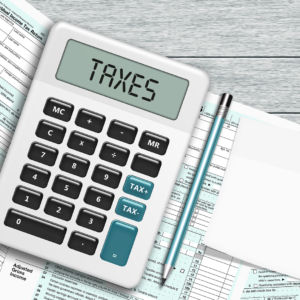You might be done filing your taxes, but Congress is just getting started on tax reform, and people who live in blue states might fare better from Republican tax plans — according to a recent analysis.
New estimates from the Tax Foundation, a right-of-center think tank, found that people in states who voted for Hillary Clinton, like New Hampshire, Minnesota, and California, could see more gains in after-tax income.
The foundation released new analysis last week, adding a state-by-state comparison of the House Republicans’ tax reform plan that came out last year. The analysis estimates the gain in after-tax income for the median household in each state. Overall in the United States, the think tank estimates the GOP tax plan would increase after-tax incomes of median households by 8.7 percent and create nearly 1.7 million new jobs.
“The increase in family incomes is the result of both the income tax cuts and the broader rise in productivity and wages due to economic growth,” said Scott Hodge, president of the Tax Foundation. “These estimates take into account all aspects of the Blueprint, including the impact of the border adjustment.”
The estimates for each state depend on the economic breakdown of the population. CNBC took the tax-gain estimates and combined them with election results and population data.
Residents of New Hampshire, Maryland, and Connecticut were all blue states who reaped the most benefits from GOP tax plans, seeing more than $6,000 in household gains. New Hampshire topped the list with $6,584 in tax-gain estimates for median households. Maryland had $6,403 and Connecticut had $6,341 in tax gains. Yet, at the bottom of the list are solid-red states like Arkansas, Kentucky, and Mississippi, whose estimated tax gains were just $3,483 for median households.
The estimates for full-time jobs added was more equitably distributed between majority Democrat and Republican states relative to population, with North Dakota, Nebraska, Minnesota, and Massachusetts at the top of that list.
So why would blue states do better under a Republican tax reform plan?
“What you really see is that blue states tend to have a bulk of wealthy Americans in cities that tend to go more Democratic and it’s where wealthier people cluster,” said Richard Phillips, senior policy analyst for the Institute of Taxation and Economic Policy, in an interview with InsideSources. “Not surprising when you have a tax plan that makes cuts for the wealthy, and I think that’s exactly what you see.”
President Donald Trump’s proposed tax plan would benefit the richest Americans the most, something that tax policy analysts across the political spectrum agree on.
The liberal Tax Policy Center estimates that the lowest 20 percent of taxpayers would see their incomes increase by about $110, or 0.8 percent. The middle 20 percent would receive $1,010, a 1.8 percent increase. The top 20 percent, would see $16,660, or a 6.6 percent rise. The top 1 percent would receive $214,690, or 13.5 percent.
The right-leaning Tax Foundation still shows wealthy Americans receiving the most benefits from Trump’s plan. In their analysis, the lowest 20 percent of taxpayers would see after-tax incomes increase by 6.9 percent to 8.1 percent. The middle 20 percent would get 7.7 percent to 9 percent. The top 20 percent would get 8.7 percent to 12.3 percent, and the top 1 percent would see a 12.2 percent to 19.9 percent increase in after-tax income.
Analysis of Census Bureau income data by CNBC and the Center on Budget and Policy Priorities shows how Trump’s tax-cut plan is benefiting the coastal elites who tend to be more Democratic, instead of his middle, working class, white American group that elected him to the presidency.
Top-income households, who would benefit more from Trump’s plan, live disproportionately in blue states, while lower-income households, who would benefit the least, live disproportionately in red states.
For example, in Maryland, 31 percent of households fall into the top 20 percent highest income group. New Jersey follows at 31 percent, Massachusetts at 30 percent, Connecticut at 30 percent, Hawaii at 29 percent, California at 26 percent, and Virginia at 26 percent, according to Census data. The residents in those states could benefit the most from Trump’s tax plan, and they all backed Clinton.
By contrast, 10 percent of households in Mississippi, 11 percent in West Virginia, 12 percent in Arkansas, 13 percent in Alabama and South Dakota, and 14 percent in Montana and Oklahoma fall in the top income bracket. All those states backed Trump.
This leaves Trump in a tricky position as he tries to retain his base from red states, yet is giving most of the federal tax benefits to blue states.
After fumbling the Affordable Health Care repeal, Republicans are hoping they can get tax reform accomplished in 2017, but it’s already turning into a political battle.
For example, House Republican leaders and conservatives want to eliminate a trillion-dollar tax break that mostly benefits wealthy filers in Democratic states. Taxpayers are allowed to deduct the state and local income taxes they pay from their taxable income. Republicans want it gone and Democrats want to protect it. The largest beneficiaries of the tax break are California, New York and New Jersey, all relatively high-tax blue states.
“There are some aspects that would hurt blue states more, like the proposal to cut the state and local income tax deductions,” Phillips said. “That’s seen as something that would hit them [blue states]. Overall, given how deeply the marginal rates are cut, it [Trump’s tax plan] still ends up benefiting wealthy people either way.”
Trump said he expects to release a new tax plan soon and analysts anxiously await to see if Trump’s core voters from red states or wealthy Democrats from blue states would benefit more from his plan.

